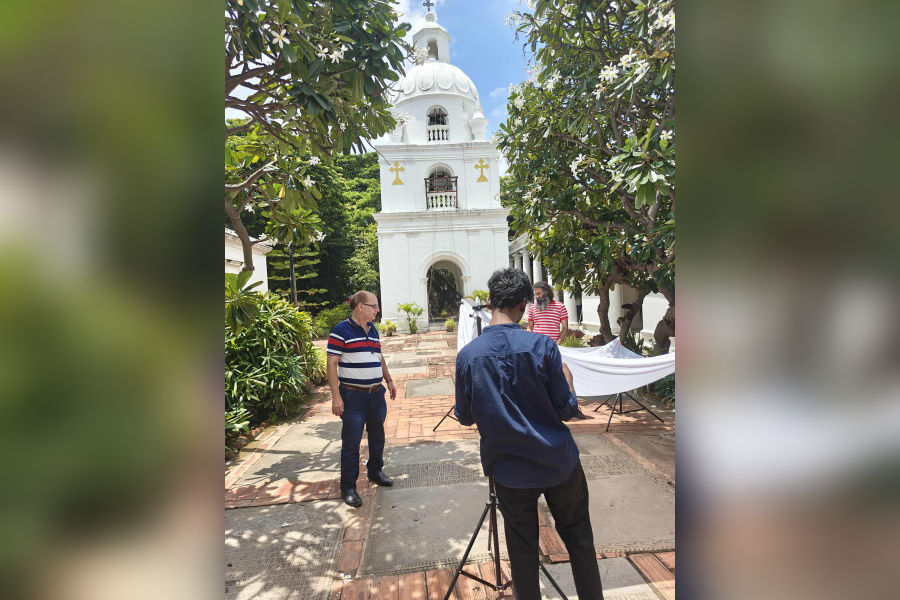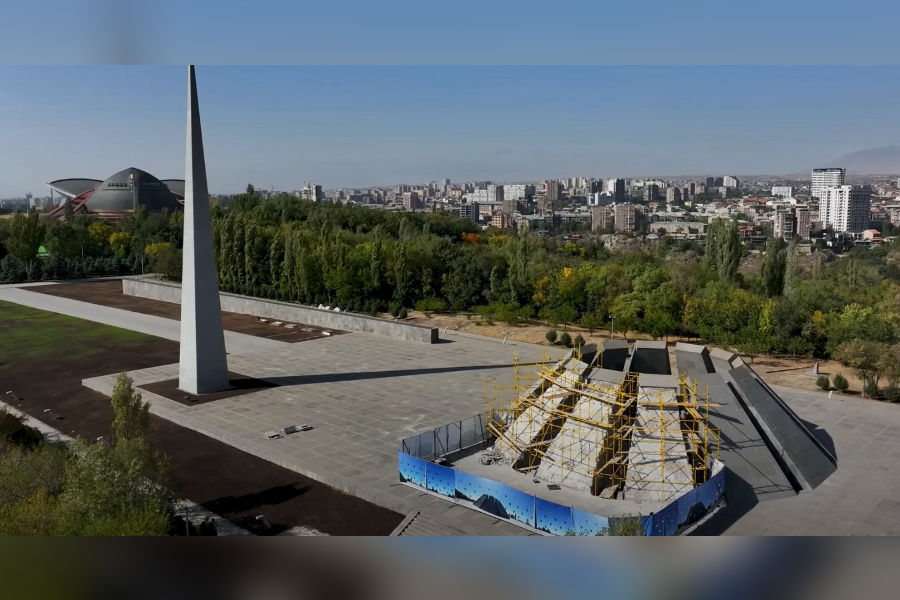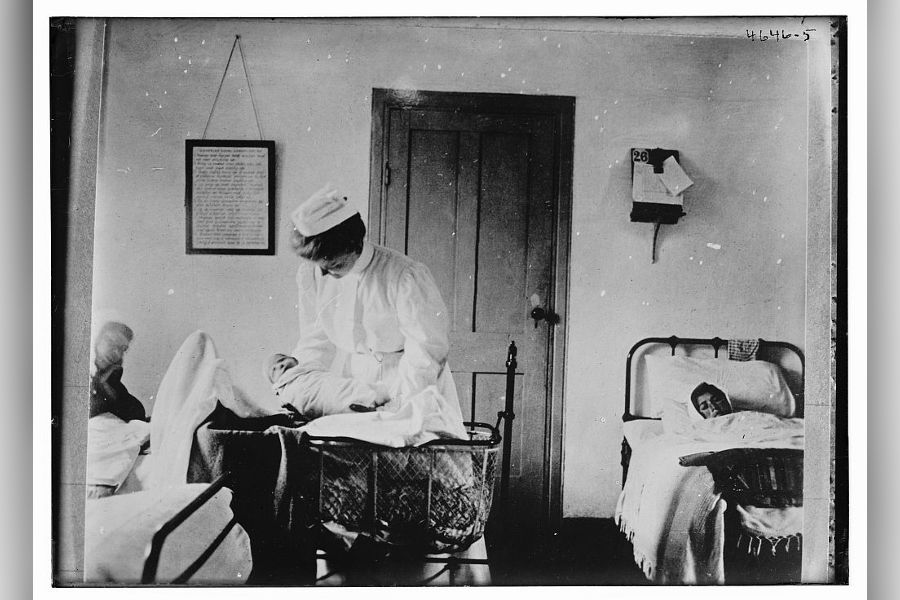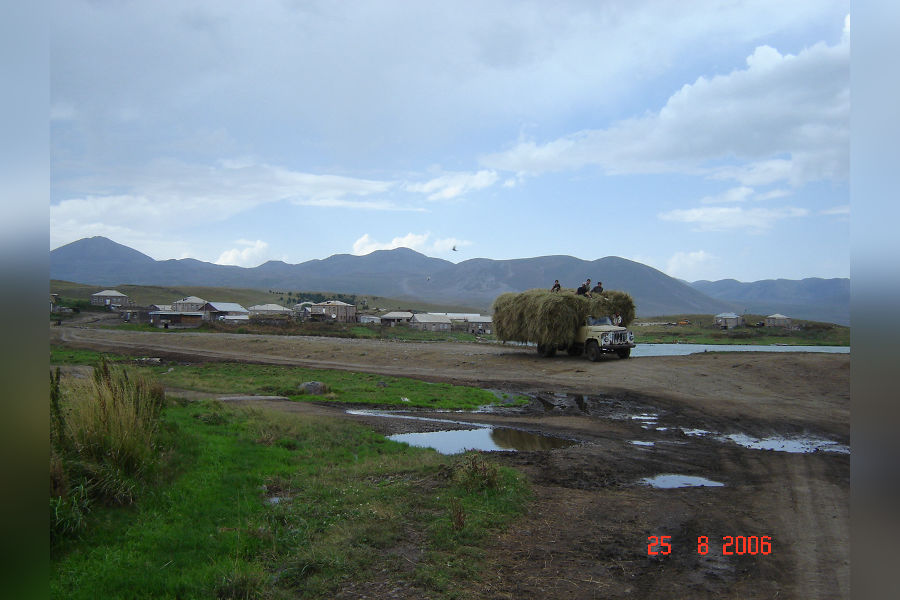Family Matters: Local Elites and the Structures of Genocide
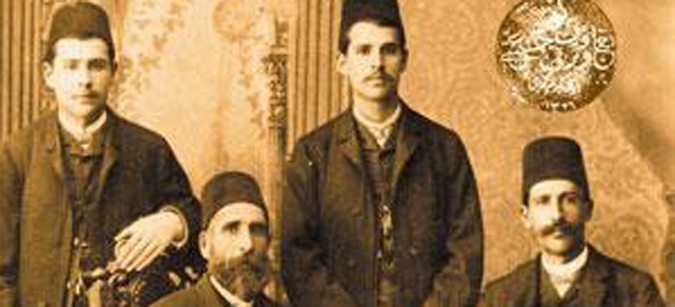
On May 23, 1915, the Ottoman Interior Minister, Mehmed Talaat Pasha, decreed the integral deportation of all Armenians to the Syrian desert. Two days later in the remote province of Diyarbekir, the governor, Dr. Mehmed Reshid, organized the destruction of the Armenian elite by ordering the execution of 807 notables. The victims were handcuffed, sailed down the Tigris to a gorge, moored, stripped of their assets and clothes, and murdered with daggers and axes. On May 30, the process was repeated with 674 Diyarbekir Armenians. The destruction of the elite was followed by that of the general Armenian population, which in the summer of 1915 developed into perhaps the most ruthless genocidal process of all the Ottoman provinces. [1]
This qualitative characterization of the genocide in Diyarbekir can be complemented with a quantitative component. The recent publication of Talaat Pasha’s Black Book has reignited the debate on the quantitative aspects of the deportation and destruction process, and has shed light on this question. [2] The book is based on Talaat’s handwritten notebook that was kept by his widow and given to the Turkish journalist, Murat Bardakci, in 1982, and charts the statistics of the deportations per province. [3] It answers some of the most fundamental questions about the Armenian Genocide, but also conjures other pertinent questions. For example, the statistics clearly demonstrate what historians have been suggesting for some time now—that the overall destruction process manifests a discrepancy between the western and eastern provinces of the Ottoman Empire; the death rates in the eastern provinces are higher than that of the western provinces. For example, whereas the deportation and destruction of Armenians in Diyarbekir was nearly total (97 percent), in Konya province this proportion was 61 percent. How can this difference be accounted for? Why was the Armenian Genocide so intense in Diyarbekir?
This article will discuss some of the social processes and power structures that may have shaped this divergence in the destruction process. It will focus on how the local Young Turk elite in Diyarbekir managed their power bases, and suggest how this may have affected the course of the genocide in that province. The emphasis will be placed on interethnic relations in Diyarbekir on the eve of World War I.
Local Young Turks in Diyarbekir Province
Deeply embedded within the social structure of Diyarbekir were overlapping and competing networks of rich, influential families of Muslim notables who had historically played the role of local power wielders in the city. These were, for example, the Cizrelizade and Ekinci families, who lived near the square. The very powerful Pirinccizade dynasty lived near the Great Mosque and the Ocak family near the Melik Ahmed Mosque, whereas the Cizrelizade lived in a large mansion next to the Iskender Pasha Mosque. Their neighbors were the powerful Ekinci family on one side, and the Iskender Pasha family on the other. Several important Kurdish dynasties such as the Zazazade and Cemilpasazade, as well as major chieftains from Hazro, Kulp, and Lice, had houses in the Ali Pasha neighborhood. They often commuted between their region of origin and the city. The Cemilpasazade were in particular important as pioneers of Kurdish nationalism. [4] To various degrees, all these local elites were connected to each other through multiple familial ties: the Cizrelizade were in-laws of the Yasinzade, the Muftuzade were related to and partly overlapped with the Direkcizade, several women of the Zazazade had married into the Gevranizade family, the Cemilpasazade were relatives-in-law of the Azizoglu, and the powerful Pirinccizade dynasty was connected to most of these families through marital ties. [5]
The ebb and flow of Diyarbekir city’s politics was often decisive for provincial politics as well. The competition between these families could rise to a boiling point as they engaged in fierce competition over access to local state resources. This often resulted in forms of corruption and nepotism, witnessed by the British traveler David Fraser, who argued in 1909 that in Diyarbekir “misgovernment is at its height, and within its walls there is neither justice for the righteous nor protection for the weak.” [6] Competition within the urban landed notable class coupled with a relatively weak central state authority produced these conditions.
Even in Diyarbekir, far away from the direct heat of the Balkan troubles, tensions between Muslims and Christians materialized. In the city, national discussions on identity and ideas on population politics had already fuelled competition and conflict between the ethnically organized political factions. Well before the war, Muftuzade Seref Ulug had proposed declaring an economic boycott against the “treacherous Armenians” in order to strengthen Muslim economic power. [7] The Armenians of Diyarbekir, in turn, were generally anti-Russian and many adhered to the Dashnaktsutiun Party, which desired Armenian autonomy. Concretely, its program aimed at more freedom and more decentralization in the Ottoman administration of the eastern provinces, the introduction of Armenian as an educational and official language, and an end to injustice, usurpation, and expropriation committed mostly by certain Kurdish tribes against (Armenian) peasants. [8]
Kurdish nationalism, though not as organized and established as its Armenian counterpart, also existed in the province. On Sept. 19, 1908, Kurdish nationalists founded the Diyarbekir office of the Kurdish Assistance and Progress Society in the city. [9] According to its statutes, it aimed to observe the constitution, pursue the notion of Ottomanism, end tribal warfare, and maintain “harmony and good relations between their compatriots the Armenians, Nestorians, and other Ottoman subjects.” [10]
The Committee of Union and Progress (CUP) had not remained idle in Diyarbekir province either. The first CUP office in Diyarbekir was opened on July 23, 1908 by Ziya Gokalp, who after all was a native of the region, and was also its representative in the party’s Central Committee. [11] Gokalp began publishing the newspaper Peyman, which adopted a relatively modest tone and emphasized coexistence among the various Ottoman subjects. [12] But after the catastrophic defeats of the Balkan wars, the atmosphere changed and interethnic relations became polarized.The CUP dictatorship exerted its influence in this province through a network of mainly urban Kurdish members. The most influential CUP members in Diyarbekir were those related to the wealthy and powerful Pirinccizade dynasty, who owned large estates in the province, including the rice fields west of Diyarbekir city. Reportedly, the Pirinccizade dynasty owned 30 villages in the vicinity of Diyarbekir city. [13]
One of their kinsmen was deputy Aziz Feyzi (1879–1933), the son of Pirinccizade Arif, who had adhered to the Kurdish Assistance and Progress Society. According to a German report, Feyzi had undertaken a study trip to Germany in 1911. [14] On behalf of many other Diyarbekir notables, he vehemently protested in the Ottoman parliament against the proposed government plan of expropriating the powerful landowners, and in time Feyzi became a Young Turk hardliner. He had held fierce and hostile discussions with the Armenian member of parliament, Vartkes Serengulian (1871–1915), in which he accused Vartkes of Armenian separatist designs. [15] He became more and more fanatic in his anti-Armenian sentiments, and reportedly had Ohannes Kazazian, a Catholic Armenian from Mardin and his political rival in the elections, assassinated in 1913.16 Given his reputation, Feyzi’s assignment to Diyarbekir caused unrest and anxiety among Armenian politicians there. [17] Other CUP sympathizers in Diyarbekir were Pirinccizade Sidki (Taranci),Yasinzade Sevki (Ekinci), his brother Yasinzade Yahya (Ekinci),Muftuzade Seref (Ulug), and less prominent others. [18]
Polarization of Inter-Ethnic Relations, 1913-14
The loss of the Balkans in 1913 reverberated throughout Ottoman society, including distant Diyarbekir. As if that had not been traumatic enough, vague talks of and slow but deliberate steps towards a reform plan to “solve” the Armenian Question, by which European “inspectors” would be appointed to ensure more Armenian and Kurdish autonomy, triggered even more concern and fear among Muslims, including those in Diyarbekir. Right after the signing of the London Treaty, Diyarbekir’s governor sent a report to the government that talk of a reform plan was causing turmoil and social unrest among Diyarbekir’s ethnic groups. According to the governor, rumors of reform were “causing much excitement and alarm among the Islamic population.” Speculative reports in newspapers about the alleged endorsement and possible implementation of a reform plan were “offending the sentiments and minds of Muslims and were lately giving rise to tumult.” The governor argued that the Muslim middle class in Diyarbekir had faith in the government, but could not remain “indifferent to such a question affecting the life and and future of our homeland (istikbal-i memleketimiz).” The Muslims, he concluded in his report, would reject such a reform plan and he “began expressing the possibility that terrible consequences (fena neticeler) could emerge from it in the future.” [19]
The final reform plan envisaged the formation of two provinces from six vilayets (Erzurum, Van, Bitlis, Diyarbekir, Mamuret-ul Aziz, and Sivas), and assigned two European inspectors to oversee Armenian affairs. The reform package was signed into law in February 1914. In the spring of 1914, the backlash by Muslims eventuated as expected by the governor. In another report, he mentioned clashes and riots between Muslims and Christians in the bazaar and inner city of Diyarbekir. The Muslims expressed their hatred of Armenians by painting anti-Christian graffiti on walls and insulting Christian symbols such as crucifixes with “repulsive profanity.” The governor concluded that the situation in Diyarbekir was firmly “unfavorable for Christians” and that Christian communities were “in complete despair.” [20] The ones who capitalized on this climate of anti-Armenian hatred were local CUP powerholders. In the summer of 1914, as the European crisis was deepening, the Ottoman civil inspector, Mihran Boyadjian, was travelling to Diyarbekir and encountered the Young Turk political hardliner Pirinccizade Aziz Feyzi on the way. Feyzi quite openly threatened the Armenians in a bitter condemnation: On the road, we often spoke about politics in the car. Feyzi Bey did not fail to slip in, in his conversations, several threats against my coreligionists. ‘The Armenians,’ he repeated, with bitterness, ‘have misbehaved towards us in our days of distress during the Balkan Wars. Patriarch Zaven, the Catholicos of Etchmiadzin and Nubar have sought to appeal to foreign intervention; that will cost you dearly my friend, your future is in danger.’ [21]
Finally, Aziz Feyzi warned: “You will see now, what it means to demand reforms.” [22] The radicalization of political elites heralded a general deep crisis of interethnic relations in Diyarbekir, which had now reached the threshold between hatred and violence. That threshold was crossed when in August 1914, the grain market of Diyarbekir became the scene of mass plunder as many Muslim merchants joined in seizing the opportunity to loot the stores of Christians and set fire to their shops. It soon became known that the Young Turk loyalist police chief, Memduh Bey, had “allowed Kurds and Muslims to pillage Armenian stores.” [23] According to Mihran Boyadjian, Memduh Bey had started the fire himself to create opportunities for pillage.24 Not only was the involvement widespread, but the inaction by local authorities implied tacit approval of the pogrom.
The war and ensuing violence in the Balkans triggered a severe radicalization in Young Turk thinking and politics. Their view that the catastrophe of the Balkans should never be allowed to happen in the remaining territories of the Ottoman Empire, especially the eastern provinces, would give birth to unprecedented forms of population politics. One major outcome of these processes was a deep fear, or perhaps a complex, of loss. The fear of losing territory was a persistent phobia of both late Ottoman and Turkish political culture. Some Ottomans foresaw the looming cataclysm. In his 1913 book on the Balkan wars, Aram Andonian wrote with considerable concern that “the principle of nationality” had spelled disaster in the Balkans and was utterly untenable in the eastern provinces, where most Armenians lived. [25] Andonian had planned to write a second volume to his
book. He was never able to do so.
Discussion: Local Elites And Genocide
Scholars of genocide have argued that local dynamics can influence the course and intensity of genocidal processes. Local political or social elites can expedite and intensify, or delay and resist, genocidal destruction steered from above. [26] Political elites can recruit local powerholders for their ends, and conversely local powerholders can manipulate political elites to further their own interests. The potential of powerful local families to mobilize dozens or in some cases hundreds of potential killers can contribute to them being favored by the center.Mass murder can develop from this mutual dependence and tacit pact: Local elites depend on the center to secure a power base, and the center depends on local elites to carry out genocide. This dynamic can give rise to a mobilization process in which men participate in mass killing in exchange for economic and political benefits granted by the regime. Thus, ethnic hatred may significantly contribute but not necessarily satisfactorily explain the mobilization of perpetrators. Rather, maintaining and increasing power for local actors can shape patterns of recruitment for and participation in genocide.
The Ottoman province of Diyarbekir served as a platform for exemplifying how local dynamics shaped the Armenian Genocide at the provincial level as a product of competition between families.
The competition between urban elites was a major factor that contributed to the intensity of the violence in Diyarbekir. Before the war, the main families in the city were engaged in a fierce struggle for political and economic power. Such a structural factor could easily be manipulated by the CUP dictatorship for its own ends as collaboration would be rewarded. The war put even more pressure on this field of competition as resources became scarcer and passivity posed a threat to one’s livelihood. A leading family such as the Pirinccizade emerged victorious from this competition by volunteering in the Special Organization militias, by being more ruthless in their competitive efforts, and by actively collaborating with the campaign the CUP regime deemed most salient: the murder of their Armenian neighbors. The genocide then emerged as an opportunity for perpetrators to solidify kin ties. When, during the genocide, a man like Aziz Feyzi proved to be a most ruthless tormentor of Armenians, it is likely that in his eyes he was only pursuing the interests of his family amidst the difficult conditions of war. From this subjective perspective, the genocide evolved not as a clear evil but rather as the shadow of virtue. After all, family matters.
ENDNOTES
1. For a detailed study of the Armenian Genocide in Diyarbekir, see Ugur Umit Ungor, “Young Turk Social Engineering: Mass Violence and the Nation State in Eastern Turkey, 1913-1950” (unpublished Ph.D. thesis, University of Amsterdam, 2009), pp. 100–58.
2. Sabrina Tavernise, “Nearly a Million Genocide Victims, Covered in a Cloak of Amnesia,” The New York Times,March 8, 2009; Ara Sarafian, “Talaat Pasha’s Black Book Documents His Campaign of Race Extermination, 1915–17” The Armenian Reporter, March 14, 2009, pp. 4–5.
3. Murat Bardakci, Talat Pasa’nin Evrak-i Metrukesi (Istanbul: Everest, 2008).
4. Hakan Ozoglu, Kurdish Notables and the Ottoman State: Evolving Identities, Competing Loyalties, and Shifting Boundaries (Albany, N.Y.: State University of New York Press, 2004), pp. 103–7.
5. Seyhmus Diken, Isyan Surgunleri (Istanbul: Iletisim, 2005), pp. 134–5, 204–5, 209.
6. David Fraser, The Short Cut to India: The Record of a Journey along the Route of the Baghdad Railway (Edinburgh: William Blackwood and Sons, 1909), pp. 180-1.
7. Ulug, “Ermeniler,” in Turk, no. 110 (Dec. 21, 1905), p. 2.
8. Politisches Archiv Auswartiges Amt (henceforth PAAA), Holstein
to Bethmann-Hollweg,May 22, 1913.
9. Tarik Zafer Tunaya, Turkiye’de Siyasal Partiler (Istanbul: Iletisim, 1997), vol. 1, pp. 430–4.
10. Kurt Teavun ve Terakki Cemiyeti Nizamnamesi (Istanbul: Kasbar, 1324), p. 1, article 1.
11. Sevket Beysanoglu, Ziya Gokalp’in Ilk Yazi Hayati: 1894-1909 (Istanbul: Diyarbakir’i Tanitma Dernegi Nesriyati, 1956), pp. 11–12.
12. Mehmed Mehdi, “Turkluk ve Osmanlilik,” in Peyman, vol. 2, quoted in: Ibid., pp. 99–101, 105.
13. Malmisanij, Kurt Teavun ve Terakki Cemiyeti ve Gazetesi (Spanga, Sweden: Apec, 1998), p. 41.
14. PAAA, R14084,Mutius to Bethmann Hollweg, June 14, 1914.
15. Tarik Zafer Tunaya, Turkiye’de Siyasal Partiler (Istanbul: Iletisim,
1997), vol. 1, pp. 600–1.
16. Jacques Rhétoré, Les chrétiens aux bítes! Souvenirs de la guerre sainte proclamée par les Turcs contre les chrétiens en 1915 (unpublished manuscript, Biblioth`eque du Saulchoir), pp. 59–60.
17. Gaidz F. Minassian, “Les relations entre le Comité Union et Progres et la Fédération Révolutionnaire Arménienne la veille de la Premiere Guerre mondiale d’aprés les sources arméniennes,” in Revue d’histoire arménienne contemporaine, vol. 1 (1995), p. 90, footnote 27.
18. Malmisanij, Kurt Teavun, p. 41.
19. Basbakanlik Osmanli Arsivi (henceforth BOA), DH.KMS 2–2/5–7, document 7, Diyarbekir governor to Interior Ministry,March 26,
1913.
20. BOA, DH.SYS 23/4, document 2, Diyarbekir governor to Interior Ministry, May 1914.
21. Vartkes Yeghiayan (ed.), British Foreign Office Dossiers on Turkish War Criminals (Pasadena, CA: AAIC, 1991), p. 479.
22. Ibid., p.480.
23. BOA, DH.SFR 44/234, Emniyet-i Umumiye Muduriyeti (Ali Munif) to Diyarbekir, Sept. 13, 1914.
24. Yeghiayan (ed.), British Foreign Office Dossiers, p. 480.
25. Aram Andonian, Balkan Savasi (Istanbul: Aras Yayincilik, 1999, transl. Zaven Biberian).
26. Examples of local studies of genocide are: Tomislav Dulic,Utopias of Nation: Local Mass Killing in Bosnia and Hercegovina, 1941-42 (Uppsala: Uppsala University Press, 2005); Lee Ann Fujii, Killing Neighbors: Webs of Violence in Rwanda (Ithaca: Cornell University Press, 2009); Dieter Pohl, Nationalsozialistische Judenverfolgung in Ostgalizien 1941-1944: Organisation und Durchfuhrung eines staatlichen Massenverbrechens (Munchen: Oldenbourg, 1996); Wendy Lower, Nazi Empire-Building and the Holocaust in Ukraine (Chapel Hill: University of North Carolina Press, 2005).




